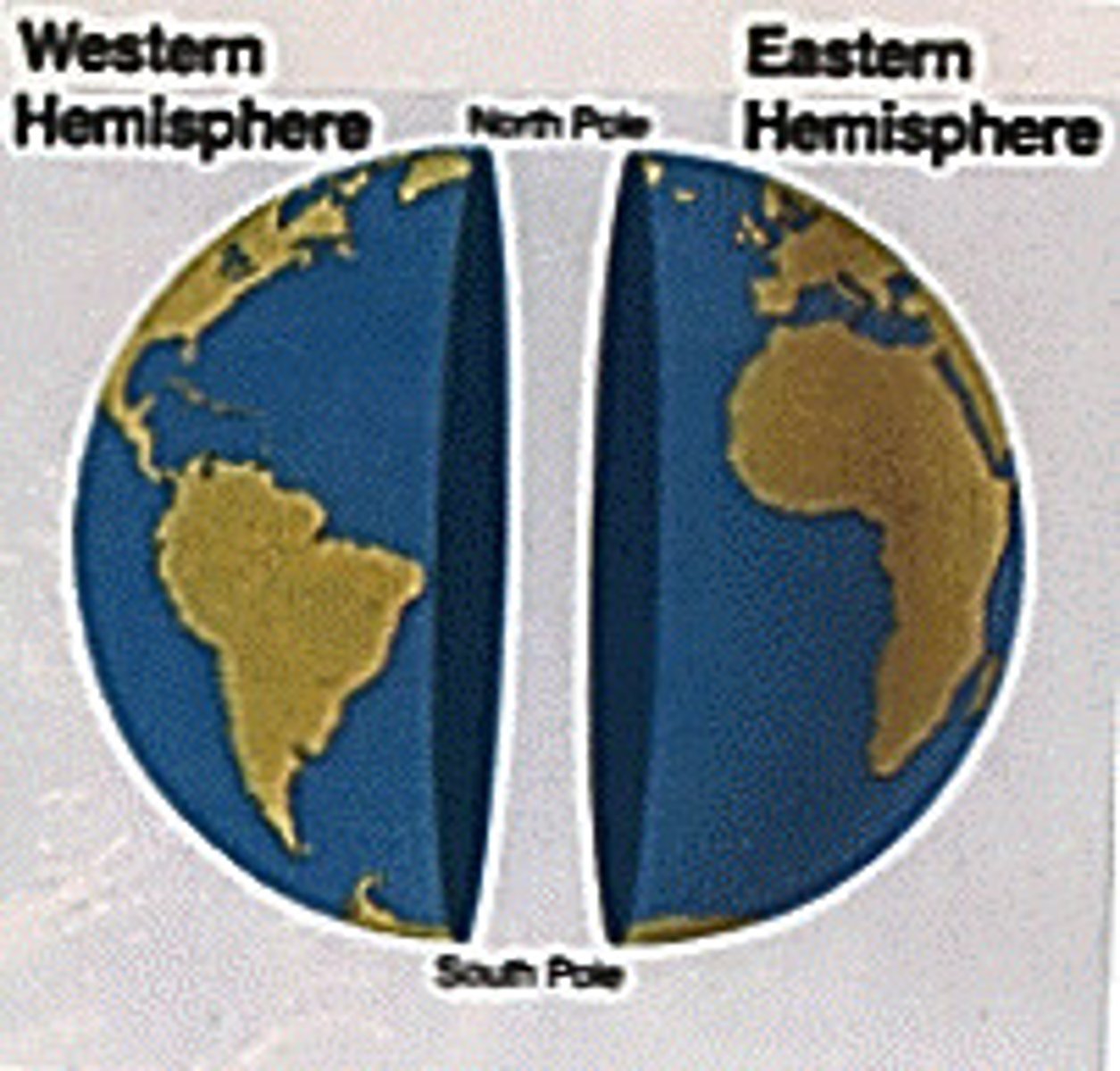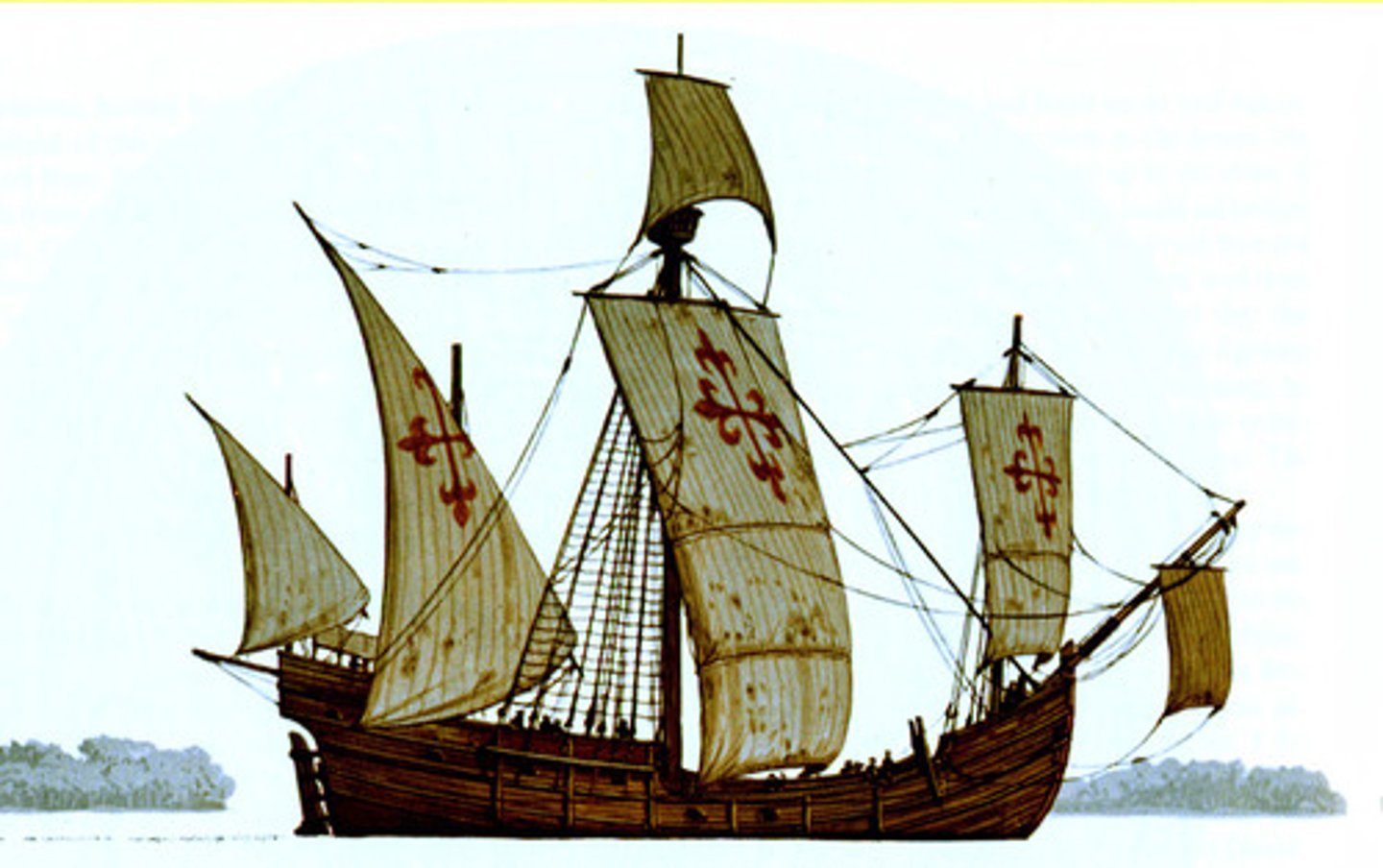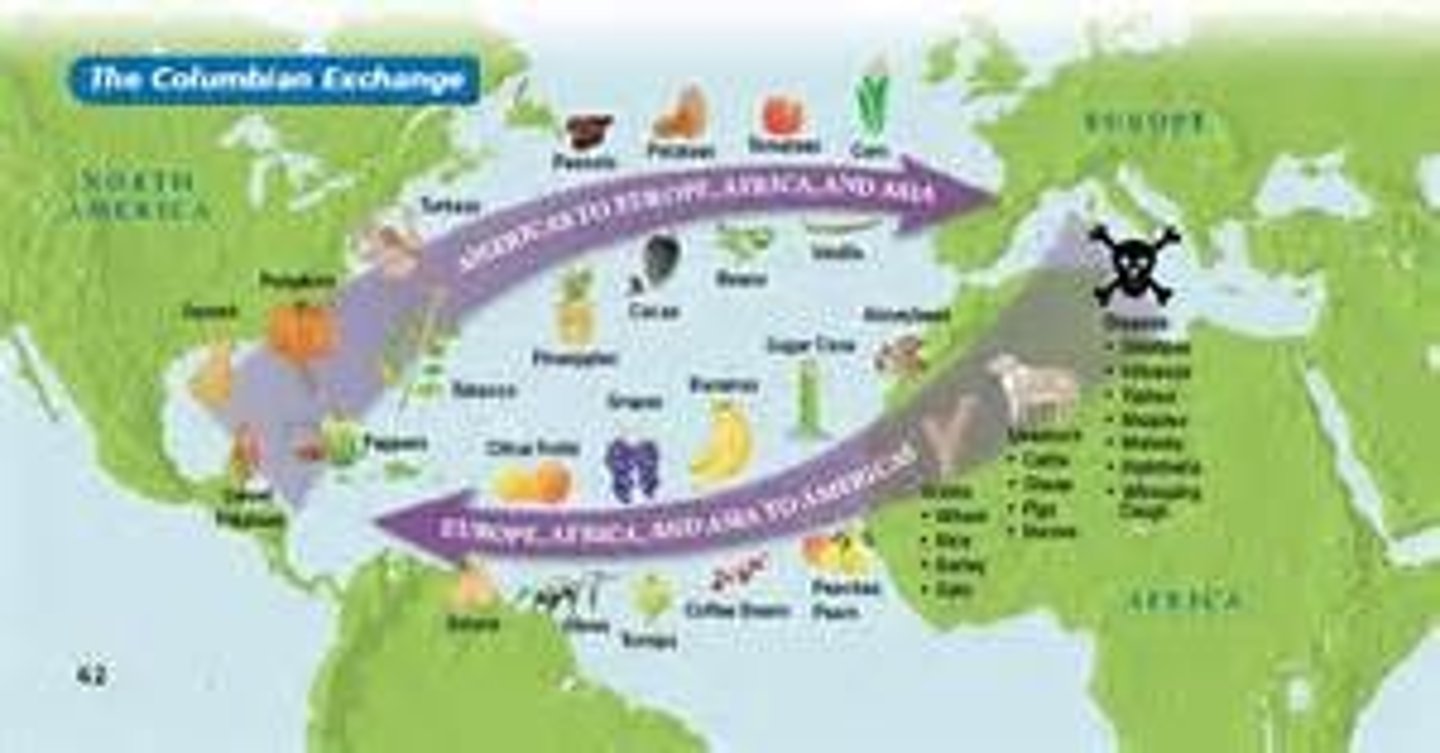AP US History Period 1, APUSH Period 1
1/30
There's no tags or description
Looks like no tags are added yet.
Name | Mastery | Learn | Test | Matching | Spaced |
|---|
No study sessions yet.
31 Terms
maize cultivation
The growing of Indian corn, a staple of many Indians diets, leading many nomadic tribes to settle and develop great civilizations such as the Aztecs incas and Mayans.
hunter-gatherer economy
A nomadic way of life with no agriculture focused on following food sources including animals and wild plants
western hemisphere
The Americas

west africa
A area of Africa that was previously unreachable until the invention of the caravel by the Portuguese, leading to exploitation of the region for its gold and slaves

plantation-based agriculture
Large scale agriculture worked by slaves
agricultural economy
economy based on the production of crops
spanish exploration
Colonization of the Americas by the conquistadors in search for gold, glory and god
encomienda system
A government system where natives were given to colonists to work in return for converting them to Christianity.
empire building
The Spanish increasing their empire through grafting their culture onto the natives and taking over the land
great plains
The open plains of the Midwest where the natives adapted to roming the prairies on horseback
Portuguese exploration
Due to advancements in sailing technology the Portuguese were able to sail down the coast of Africa and open trade of gold and slaves, settle and make plantations and eventually find the way around Africa to the indies
slave labor
Forced labor of people considered property by the people in charge
Colombian exchange
the exchange between the new world and the old world consisting of the old world bringing wheat, cows, horses, sheep, pigs, sugar, rice, coffee, smallpox, malaria and yellow fever. while the new world sent gold, silver, corn, potatoes, tobacco, and syphills

What happened as settlers migrated and settled across the vast expanse of North America over
time?
Result? - Native populations often resisted the European advances, but
millions of Indians were killed through disease, war, and slavery. Land was taken by European settlers. In
Spanish America, Catholicism spread quickly through missions and forced conversions.
What impact did the spread of maize cultivation have on the American southwest?
Maize and other food crops led to large, more permanent agricultural societies with
larger populations. Europeans discovered that corn was a valuable agricultural staple
because it was relatively easy to grow and very useful
How did the development of permanent villages in the northeast impact native tribes?
Some tribes in the northeast were able to form some loose alliances based on language and other
factors.
What did Spanish and Portuguese exploration and conquest lead to?
Spread of smallpox and other diseases which decimated huge numbers of American Indians. The Spanish
and Portuguese often employed violent and brutal tactics in their search for gold, silver, and other
riches. This led to many conflicts between Native peoples and the Spanish and Portuguese and the
deaths and subjugation of many, many Native people
What impact did Spanish and Portuguese traders have on West Africa?
Spanish and Portuguese traders dominated the slave trade, especially as demand for labor in the
colonies increased. In particular, slaves were desired for growing sugar. Some African tribes
participated in the slave trade in order to receive European goods, especially guns, and to weaken their
African rivals.
What was the impact of new crops and livestock in the Americas?
New crops (bananas, sugar) and domestic livestock (pigs, sheep, and cattle) had a huge impact on the
Americas. Horses, in particular, changed the way of life in the Americas. Disease, though, had the largest
impact, killing millions.
What was the encomienda system and why was it replaced by slave labor?
The encomienda system gave Spanish settlers land and the ability to force local Native
Americans to work on this land. Since so many Indians were dying from disease, the Spanish and
Portuguese looked to African slaves to work as laborers.
How did African slaves achieve some level cultural preservation and autonomy.?
African slaves maintained many traditional African religious and cultural practices under slavery. Slaves
sought to marry and create families and communities in even the most difficult situations. There were at
least seven major slave revolts in the Caribbean. In addition, slaves resisted their owners in a variety of
subtle and sometimes not subtle ways. Finally, from the first African immigrants to the western
hemisphere, there was always a population of free African settlers in the Americas.
Small pox:
highly contagious disease brought by Europeans that killed millions of American Indians, who
had not been previously exposed to this disease because most American Indians had not lived with or
near domesticated animals like cattle or sheep.
Pueblo Indians:
Native people found in the American southwest who for many years resisted Spanish
encroachment on Indian land and attempts at forced conversions.
African Religions:
Traditional African religions and practices were brought to the Western hemisphere
through the African diaspora and the slave trade, often resulting in a syncretic blending with Christianity.
African immigrants and slaves worked to maintain traditional religious and social practices in their new
surroundings.
Spanish Mission System:
Series of Spanish settlements focused on converting American Indians to
Catholicism. Many of these missions (San Francisco, San Diego, etc.) were key to economic and social
development of the American southwest.
Bartolome de Las Cases:
Spanish priest who wrote about the many atrocities he witnessed the Spanish
commit against the Indians.
Encomienda System:
a land and labor distribution system that gave Spanish settlers land and the ability
to force local Native Americans to work on this land.
Algonquin Indians:
Native people found in the American northeast who were close allies of the French
and participated in the fur trade. Algonquin Indians were the historic enemy of Iroquois Indians.
Conquistador
A Spanish conqueror of the Americas
Line of Demarcation/Treaty of Tordesillas
invisible line created by Pope Alexander VI to make peace between Spain and Portugal. In signing the treaty Spain agreed that the land west of the line could be claimed by Spain, while the east was Portugal's. Brazil was only region in the Americas to go to Portugal.
Juan Gines de Sepulveda
The Spanish scholar who argued that Indians were not fully human and thus enslaving them was acceptable.